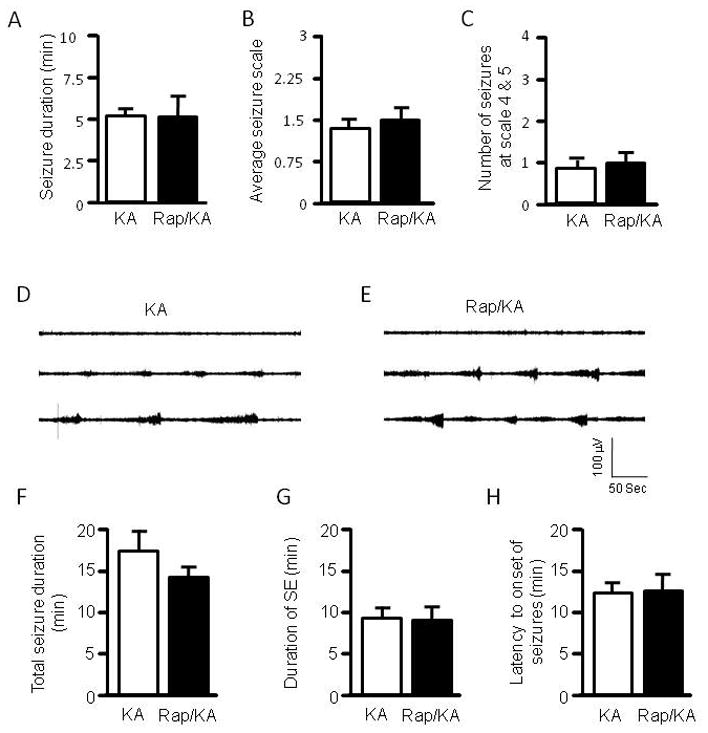Figure 3.

Rapamycin does not change seizure susceptibility to kainate. Rats were treated with vehicle or rapamycin for three days prior to induction of seizures by kainate (labeled as KA and Rap/KA, respectively) at 10 mg/kg (A–C). Behavioral seizures are presented as average seizure duration (min) (kainate: 5.26 ± 0.51 vs rapamycin/kainate: 5.13 ± 1.48) (A), average seizure scale (kainate: 1.39 ± 0.21 vs rapamycin/kainate: 1.46 ± 0.39) (B), and average number of stage 4 and 5 seizures (kainate: 0.88 ± 0.23 vs rapamycin/kainate: 1.0 ± 0.27) (C). (mean ± SEM; n=9–10). Typical electrographic seizures recorded from cortex in immature rats that were treated with kainate at 20 mg/kg (D) or rapamycin plus kainate at 20 mg/kg (E). Quantification of electrographic seizures presented as total seizure duration (min) (kainate: 17.165± 2.098 vs rapamycin/kainate: 14.217 ± 1.502) (F), average of total SE duration (min) (kainate: 8.315 ± 2.177 vs rapamycin/kainate: 8.074 ± 2.446) (G), and latency to onset of seizures (min) (kainate: 13.15 ± 0.998 vs rapamycin/kainate: 13.330 ± 1.717) (H). (mean ± SEM; n=9).
